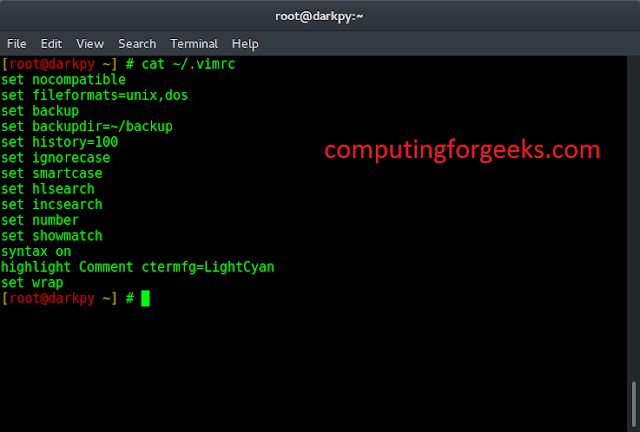Given two integers N and K, the task is to find the count of N-digit numbers such that the absolute difference of adjacent digits in the number is not greater than K.
Examples:
Input: N = 2, K = 1
Output: 26
Explanation: The numbers are 10, 11, 12, 21, 22, 23, 32, 33, 34, 43, 44, 45, 54, 55, 56, 65, 66, 67, 76, 77, 78, 87, 88, 89, 98, 99
Input: N = 3, K = 2
Output: 188
Naive Approach and Dynamic Programming Approach: Refer to Count of N-digit numbers with absolute difference of adjacent digits not exceeding K for the simplest solution and the dynamic programming approach that requires O(N) auxiliary space.
Space-Efficient Approach:
Follow the steps below to optimize the above approach:
- In the above approach, a 2D array dp[][] is initialized where dp[i][j] stores the count of numbers having i digits and ending with j.
- It can be observed that the answer for any length i depends only on the count generated for i – 1. So, instead of a 2D array, initialize an array dp[] of size of all possible digits, and for every i upto N, dp[j] stores count of such numbers of length i ending with digit j.
- Initialize another array next[] of size of all possible digits.
- Since the count of single-digit numbers ending with a value j is always 1, fill dp[] with 1 at all indices initially.
- Iterate over the range [2, N], and for every value in the range i, check if the last digit is j, then the allowed digits for this place are in the range (max(0, j-k), min(9, j+k)). Perform a range update:
next[l] = next[l] + dp[j]
next[r + 1] = next[r + 1] – dp[j]
where l and r are max(0, j – k) and min(9, j + k) respectively.
- Once the above step is completed for a particular value of i, compute prefix sum of next[] and update dp[] with the values of next[].
Below is the implementation of the above approach:
C
// C program to implement the above approach#include <stdio.h>// Function to find maximum between two numbersint max(int num1, int num2){ return (num1 > num2 ) ? num1 : num2;}// Function to find minimum between two numbersint min(int num1, int num2) { return (num1 > num2 ) ? num2 : num1;}// Function to return the count// of such numbersint getCount(int n, int k){ // For 1-digit numbers, the count // is 10 irrespective of K if (n == 1) return 10; // dp[j] stores the number // of such i-digit numbers // ending with j int dp[11] = {0}; // Stores the results of length i int next[11] = {0}; // Initialize count for // 1-digit numbers for(int i = 1; i <= 9; i++) dp[i] = 1; // Compute values for count of // digits greater than 1 for(int i = 2; i <= n; i++) { for(int j = 0; j <= 9; j++) { // Find the range of allowed // numbers if last digit is j int l = max(0, (j - k)); int r = min(9, (j + k)); // Perform Range update next[l] += dp[j]; next[r + 1] -= dp[j]; } // Prefix sum to find actual count // of i-digit numbers ending with j for(int j = 1; j <= 9; j++) next[j] += next[j - 1]; // Update dp[] for(int j = 0; j < 10; j++) { dp[j] = next[j]; next[j] = 0; } } // Stores the final answer int count = 0; for(int i = 0; i <= 9; i++) count += dp[i]; // Return the final answer return count;}// Driver Codeint main(){ int n = 2, k = 1; printf("%d", getCount(n, k));}// This code is contributed by piyush3010. |
C++
// C++ Program to implement// the above approach#include <bits/stdc++.h>using namespace std;// Function to find maximum between two numbersint max(int num1, int num2){ return (num1 > num2 ) ? num1 : num2;} // Function to find minimum between two numbersint min(int num1, int num2){ return (num1 > num2 ) ? num2 : num1;} // Function to return the count// of such numbersint getCount(int n, int k){ // For 1-digit numbers, the count // is 10 irrespective of K if (n == 1) return 10; // dp[j] stores the number // of such i-digit numbers // ending with j int dp[11] = {0}; // Stores the results of length i int next[11] = {0}; // Initialize count for // 1-digit numbers for(int i = 1; i <= 9; i++) dp[i] = 1; // Compute values for count of // digits greater than 1 for(int i = 2; i <= n; i++) { for(int j = 0; j <= 9; j++) { // Find the range of allowed // numbers if last digit is j int l = max(0, (j - k)); int r = min(9, (j + k)); // Perform Range update next[l] += dp[j]; next[r + 1] -= dp[j]; } // Prefix sum to find actual count // of i-digit numbers ending with j for(int j = 1; j <= 9; j++) next[j] += next[j - 1]; // Update dp[] for(int j = 0; j < 10; j++) { dp[j] = next[j]; next[j] = 0; } } // Stores the final answer int count = 0; for(int i = 0; i <= 9; i++) count += dp[i]; // Return the final answer return count;}// Driver Codeint main(){ int n = 2, k = 1; cout << getCount(n, k); return 0;} |
Java
// Java Program to implement// the above approachimport java.util.*;class GFG { // Function to return the count // of such numbers public static long getCount( int n, int k) { // For 1-digit numbers, the count // is 10 irrespective of K if (n == 1) return 10; // dp[j] stores the number // of such i-digit numbers // ending with j long dp[] = new long[11]; // Stores the results of length i long next[] = new long[11]; // Initialize count for // 1-digit numbers for (int i = 1; i <= 9; i++) dp[i] = 1; // Compute values for count of // digits greater than 1 for (int i = 2; i <= n; i++) { for (int j = 0; j <= 9; j++) { // Find the range of allowed // numbers if last digit is j int l = Math.max(0, j - k); int r = Math.min(9, j + k); // Perform Range update next[l] += dp[j]; next[r + 1] -= dp[j]; } // Prefix sum to find actual count // of i-digit numbers ending with j for (int j = 1; j <= 9; j++) next[j] += next[j - 1]; // Update dp[] for (int j = 0; j < 10; j++) { dp[j] = next[j]; next[j] = 0; } } // Stores the final answer long count = 0; for (int i = 0; i <= 9; i++) count += dp[i]; // Return the final answer return count; } // Driver Code public static void main(String[] args) { int n = 2, k = 1; System.out.println(getCount(n, k)); }} |
Python3
# Python3 program to implement# the above approach# Function to return the count# of such numbersdef getCount(n, K): # For 1-digit numbers, the count # is 10 irrespective of K if(n == 1): return 10 # dp[j] stores the number # of such i-digit numbers # ending with j dp = [0] * 11 # Stores the results of length i next = [0] * 11 # Initialize count for # 1-digit numbers for i in range(1, 9 + 1): dp[i] = 1 # Compute values for count of # digits greater than 1 for i in range(2, n + 1): for j in range(9 + 1): # Find the range of allowed # numbers if last digit is j l = max(0, j - k) r = min(9, j + k) # Perform Range update next[l] += dp[j] next[r + 1] -= dp[j] # Prefix sum to find actual count # of i-digit numbers ending with j for j in range(1, 9 + 1): next[j] += next[j - 1] # Update dp[] for j in range(10): dp[j] = next[j] next[j] = 0 # Stores the final answer count = 0 for i in range(9 + 1): count += dp[i] # Return the final answer return count# Driver codeif __name__ == '__main__': n = 2 k = 1 print(getCount(n, k))# This code is contributed by Shivam Singh |
C#
// C# program to implement// the above approachusing System;class GFG{// Function to return the count// of such numberspublic static long getCount(int n, int k){ // For 1-digit numbers, the count // is 10 irrespective of K if (n == 1) return 10; // dp[j] stores the number // of such i-digit numbers // ending with j long []dp = new long[11]; // Stores the results of length i long []next = new long[11]; // Initialize count for // 1-digit numbers for(int i = 1; i <= 9; i++) dp[i] = 1; // Compute values for count of // digits greater than 1 for(int i = 2; i <= n; i++) { for(int j = 0; j <= 9; j++) { // Find the range of allowed // numbers if last digit is j int l = Math.Max(0, j - k); int r = Math.Min(9, j + k); // Perform Range update next[l] += dp[j]; next[r + 1] -= dp[j]; } // Prefix sum to find actual count // of i-digit numbers ending with j for(int j = 1; j <= 9; j++) next[j] += next[j - 1]; // Update []dp for(int j = 0; j < 10; j++) { dp[j] = next[j]; next[j] = 0; } } // Stores the readonly answer long count = 0; for(int i = 0; i <= 9; i++) count += dp[i]; // Return the readonly answer return count;}// Driver Codepublic static void Main(String[] args){ int n = 2, k = 1; Console.WriteLine(getCount(n, k));}}// This code is contributed by amal kumar choubey |
Javascript
<script>// Javascript program to implement the above approach// Function to find maximum between two numbersfunction max(num1, num2){ return (num1 > num2 ) ? num1 : num2;}// Function to find minimum between two numbersfunction min(num1, num2) { return (num1 > num2 ) ? num2 : num1;}// Function to return the count// of such numbersfunction getCount(n, k){ // For 1-digit numbers, the count // is 10 irrespective of K if (n == 1) return 10; // dp[j] stores the number // of such i-digit numbers // ending with j var dp = Array(11).fill(0); // Stores the results of length i var next = Array(11).fill(0); // Initialize count for // 1-digit numbers for(var i = 1; i <= 9; i++) dp[i] = 1; // Compute values for count of // digits greater than 1 for(var i = 2; i <= n; i++) { for(var j = 0; j <= 9; j++) { // Find the range of allowed // numbers if last digit is j var l = Math.max(0, (j - k)); var r = Math.min(9, (j + k)); // Perform Range update next[l] += dp[j]; next[r + 1] -= dp[j]; } // Prefix sum to find actual count // of i-digit numbers ending with j for(var j = 1; j <= 9; j++) next[j] += next[j - 1]; // Update dp[] for(var j = 0; j < 10; j++) { dp[j] = next[j]; next[j] = 0; } } // Stores the final answer var count = 0; for(var i = 0; i <= 9; i++) count += dp[i]; // Return the final answer return count;}// Driver Codevar n = 2, k = 1;document.write( getCount(n, k));// This code is contributed by chinmoy1997pal.</script> |
26
Time Complexity: O(N)
Auxiliary Space: O(1)
Ready to dive in? Explore our Free Demo Content and join our DSA course, trusted by over 100,000 neveropen!




